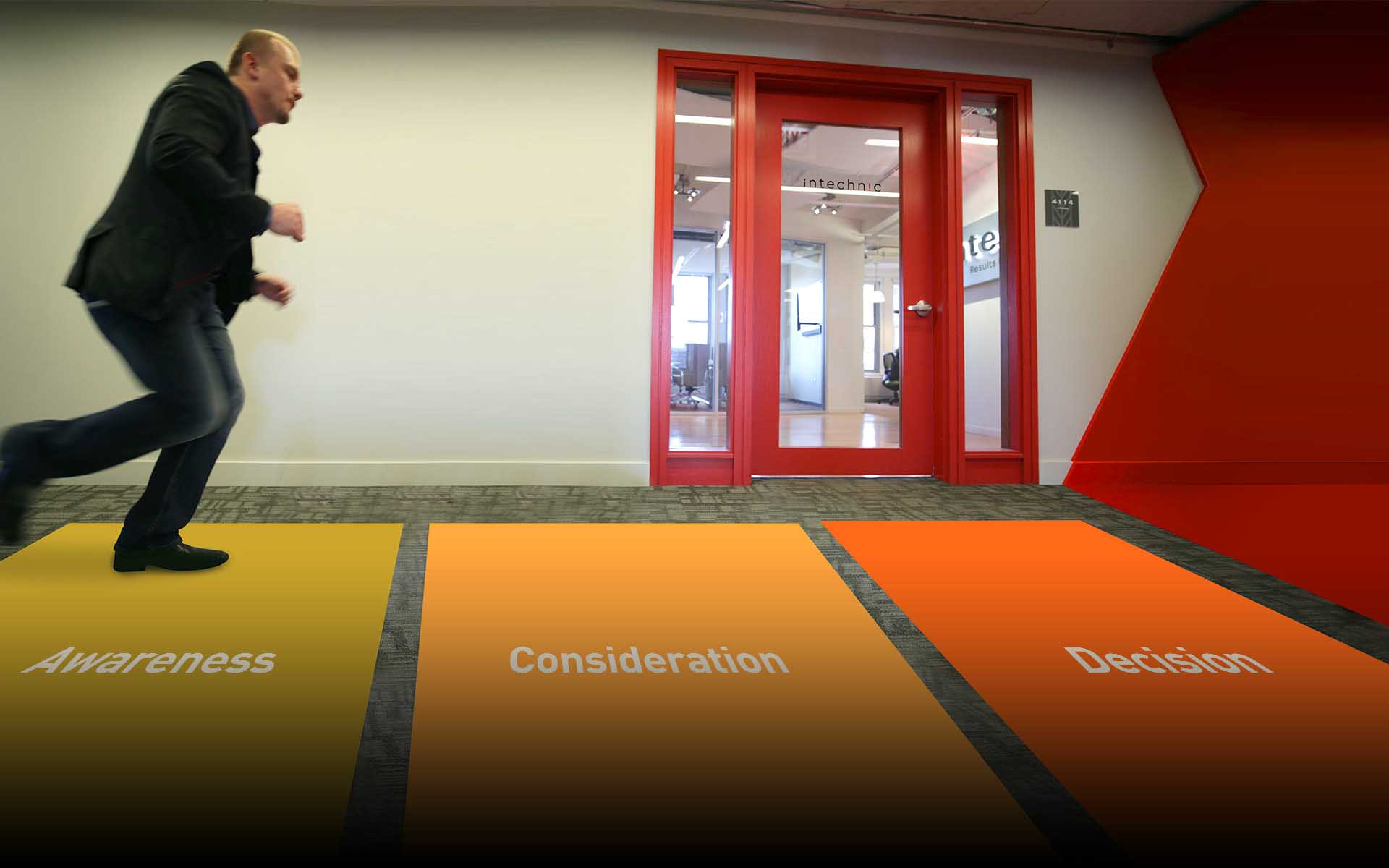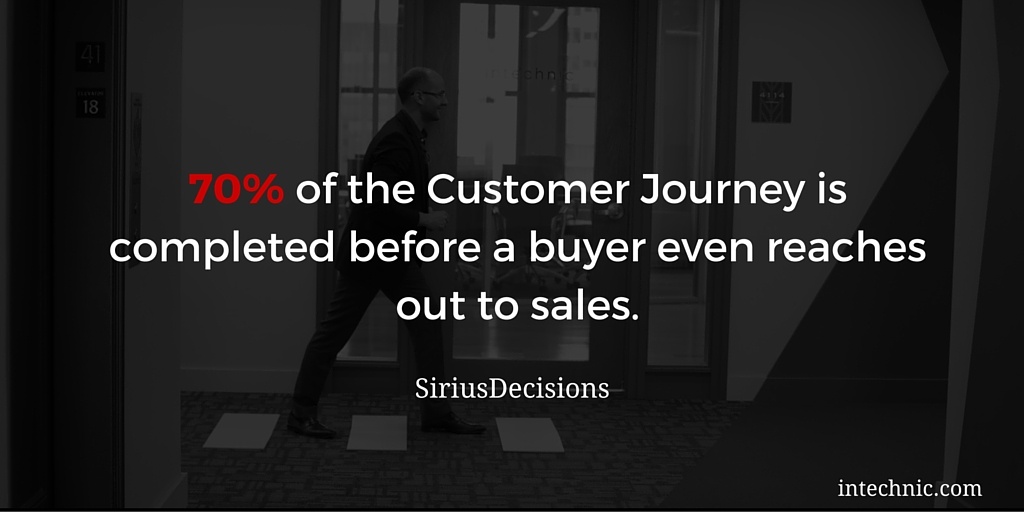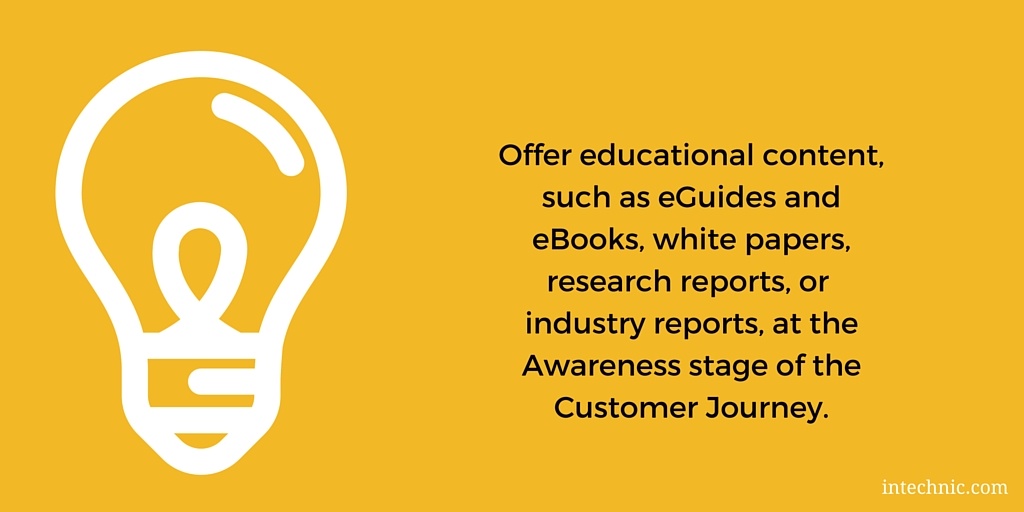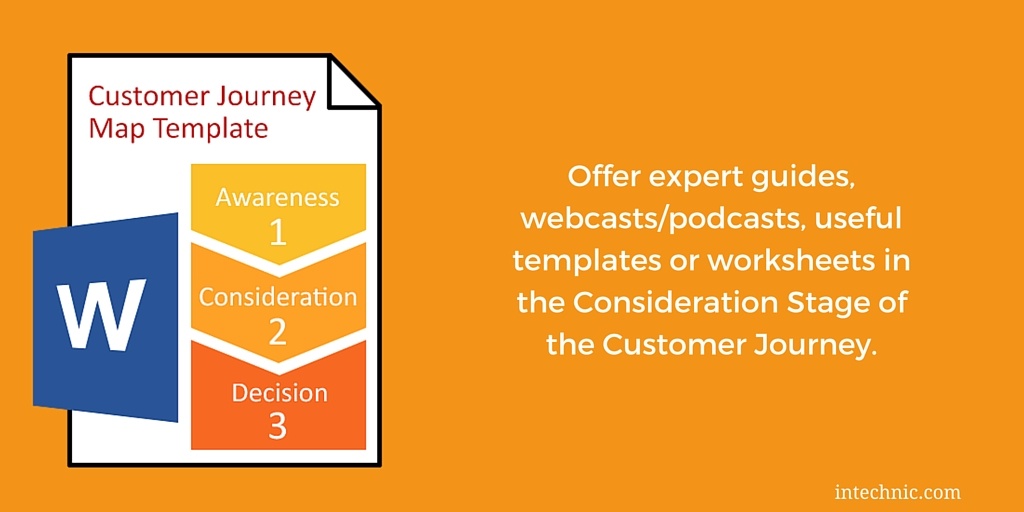How to Create a Customer Journey Map: Tools & Template
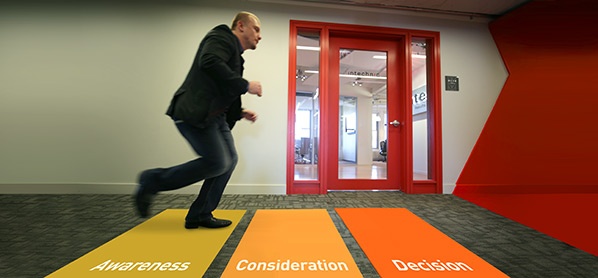 Marketers know that making a purchase is a journey for every customer. Customers go through this “Customer Journey” (also sometimes referred to as a "Buyer's Journey") every time they make a purchase. Some journeys are shorter, some are longer, but no matter the size, every purchase follows a similar process.
Marketers know that making a purchase is a journey for every customer. Customers go through this “Customer Journey” (also sometimes referred to as a "Buyer's Journey") every time they make a purchase. Some journeys are shorter, some are longer, but no matter the size, every purchase follows a similar process.
What Is a Customer Journey?
The Customer Journey is the process every buyer goes through leading up to a purchase. This happens every time, with every purchase we make. It doesn’t matter if you are buying something as small as lunch or as large and expensive as a car. Let's look at some examples:
Three Stages of the Customer Journey
You might be surprised, but you always go through the same thought process, consisting of the following three stages:
|
1) Awareness You realize that you have a need or a Problem: |
2) Consideration You research and consider possible Solutions: |
3) Decision You make a Decision: |
|
You get hungry. |
"What do I feel like eating that’s quick and nearby?" |
"I will try this new place my friend recommended" |
|
You break your phone. |
"What phones have the best camera? Where can I see them in person?" |
"I love the features and price. My friends recommended it highly." |
|
Your boss wants you to generate more sales leads. |
"What marketing tools can save time? How can I produce better results as a one-person marketing team?" |
"My boss approved the budget for this marketing automation solution because I was able to demonstrate ROI." |
Go ahead and think about how you buy anything. You will see that there is always a process and there are always these three stages: Awareness, Consideration and Decision.
Why is Customer Journey Mapping Important?
Marketers have been studying and mapping Customer Journeys for years. They allow us to understand buyer’s needs, behavior, research, decision making process, buying criteria and more. This information can then be used in marketing and sales to help guide prospective customers through the journey to becoming buying customers. For example, you can provide them with useful content to educate them about potential ways to solve their problem or help them compare solutions. Customers will appreciate the help and will more than likely gravitate toward the company that proves to be the most helpful during their journey. Customer Journey mapping puts you in control. If you don’t know how your customers make their decisions then you cannot be there to help guide them and, chances are, they will buy from someone who does know and who is there to help. This day and age, with all the advances available in marketing automation, the decision is simple. Either you map out a CustomerJourney and guide your customers, or you lose them to a competitor who does.
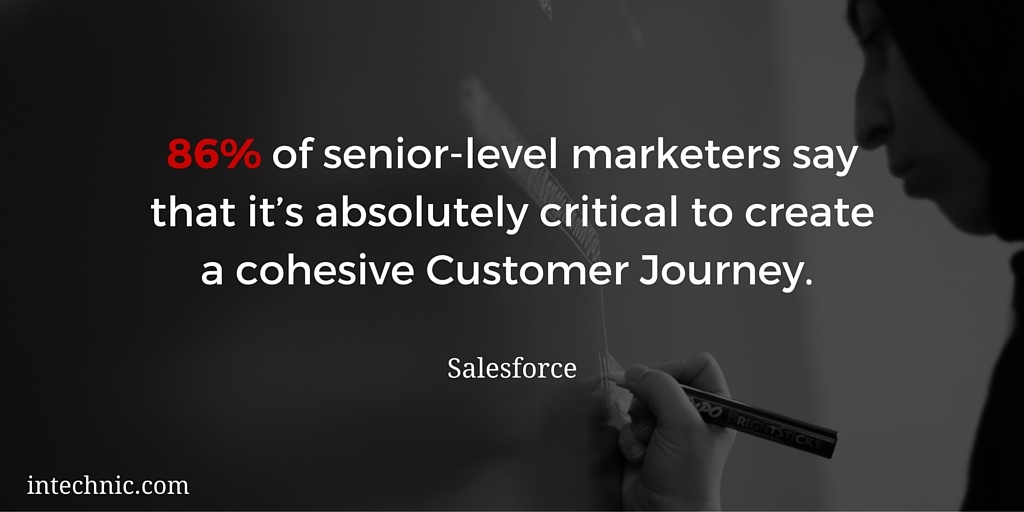
Why Do I Need to Map Customer Journeys for My Website?
With more and more buyers using the Internet to find information on products, services or companies prior to making a purchase, it goes without saying that a vast majority of them will be making a decision while doing research online, either before interacting with sales or without ever speaking to someone. This leaves you with one major tool that buyers will rely on in the foreseeable future – your website. 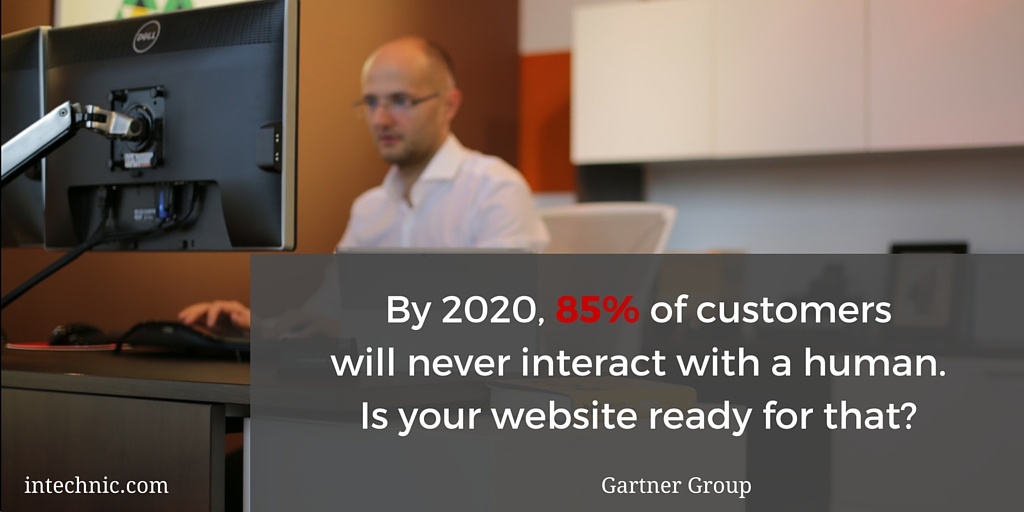 But how do you know what information to give your potential buyers and when? Well, this is exactly where the Customer Journey Map comes in. Mapping your website content to you Customer Journey will ensure that your website users get the information they need, when they need it. It is the best way to start building a relationship. Remember, you are not selling anything at this point. Most of your website visitors are not ready to buy, they are just doing research (Awareness or Consideration Stage). Your job is to give them something they want, something of value that they can use in their journey. Many of your website visitors will appreciate that you have made their research easy for them. They will remember you as someone who’s been supporting them through the process. You will come across as helpful, credible and more importantly – familiar. When it comes to making a decision, customers will be much more open to doing business with someone they recognize. The school of thought that teaches bringing in leads by giving them information they are looking for is called Inbound Marketing. The process of taking them through the stages of the Customer Journey is called "lead nurturing".
But how do you know what information to give your potential buyers and when? Well, this is exactly where the Customer Journey Map comes in. Mapping your website content to you Customer Journey will ensure that your website users get the information they need, when they need it. It is the best way to start building a relationship. Remember, you are not selling anything at this point. Most of your website visitors are not ready to buy, they are just doing research (Awareness or Consideration Stage). Your job is to give them something they want, something of value that they can use in their journey. Many of your website visitors will appreciate that you have made their research easy for them. They will remember you as someone who’s been supporting them through the process. You will come across as helpful, credible and more importantly – familiar. When it comes to making a decision, customers will be much more open to doing business with someone they recognize. The school of thought that teaches bringing in leads by giving them information they are looking for is called Inbound Marketing. The process of taking them through the stages of the Customer Journey is called "lead nurturing".
So how do you do all that? Let’s dive in!
Tools to Map Customer Journey
First, you need to collect information from your customers about how they go through their journey. This step is of critical importance. You want your Customer Journey to be based on accurate and reliable information, from the source (your customers), as opposed to assumptions. Remember, you are not your customer so don’t assume you know everything about their process and definitely don't make things up! In order for your Customer Journey to be based on facts and not fiction, you must complete the following three steps first:
- Identify your Best Customers – know which customers you want to attract.
Tool to use: Customer Lifetime Value Excel Spreadsheet
- Interview Your Customers – interview your customers about their journey.
Tool to use: Customer Interview Questions Template
- Create Buyer Personas – create Personas to refer to throughout the Customer Journey.
Tool to use: Buyer Persona Template & Examples
Note that we have comprehensive guides for all three steps to help you complete them as quickly and efficiently as possible. Now that you have done all three, let’s get started on Journeys:
Mapping a Customer Journey
The process of creating a Customer Journey is sometimes referred to as “mapping”. The reason is simple: you can think of a Customer Journey as an actual map - starting with Awareness, then travelling into Consideration and, finally, arriving at a Decision. The process of creating a Customer Journey involves laying out your findings on that map (hence “mapping”). 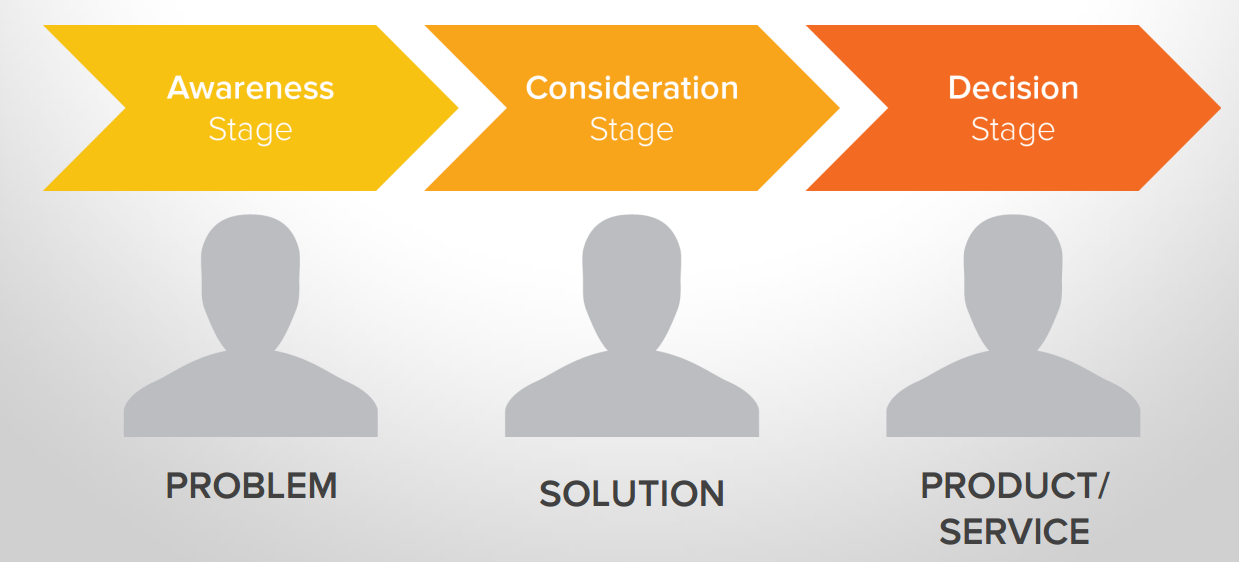 To help you get started mapping, we prepared a Customer Journey Template & Examples that includes an “empty” map you can use along with two examples: B2C and B2B.
To help you get started mapping, we prepared a Customer Journey Template & Examples that includes an “empty” map you can use along with two examples: B2C and B2B.  The process of writing out a Customer Journey is similar to creating Buyer Personas. The latter involves studying your interview and market research findings, recognizing and extrapolating important events and information that define the stages of a Customer Journey and then writing them down for each unique persona in chronological order. To do this effectively, you must know what to look for. Let’s look at all three stages in more detail:
The process of writing out a Customer Journey is similar to creating Buyer Personas. The latter involves studying your interview and market research findings, recognizing and extrapolating important events and information that define the stages of a Customer Journey and then writing them down for each unique persona in chronological order. To do this effectively, you must know what to look for. Let’s look at all three stages in more detail:
1. Awareness Stage
At the beginning of the Customer Journey, buyers are generally not aware that they have a need or a problem. Or, they are already aware of the problem but it isn’t at the top of their list. People procrastinate. Unless it is a priority, most people won’t do anything about minor issues until they absolutely have to. Then, something happens. We call this a “moment of realization”. The customer decides that they must act on this need or solve their problem. This could be anything: the problem became too acute to ignore, someone else pointed it out or asked that the issue be addressed, priorities shifted or other circumstances brought the pain point to their attention. 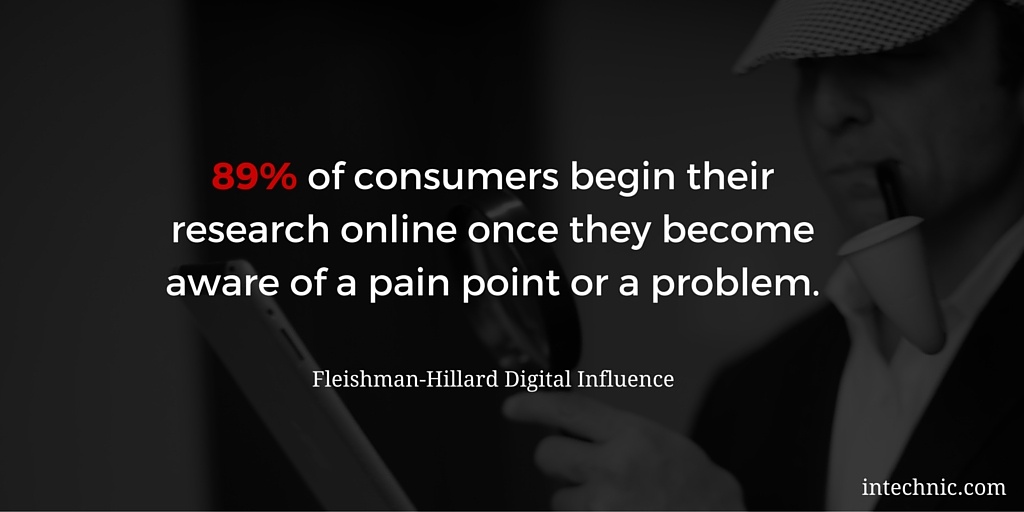 At this point, buyers are unaware of your company and the solutions you offer. Frankly, they don’t even care you exist. They are just coming to the realization that they have a problem to solve and they start to look for possible solutions. They typically begin their search online with general keywords, exploring possible solutions. Most will turn to Google. These keywords are typically focused on the problem, “how to…”, “what to do…”, “solutions for…” or the possible solution (considering the individual knows potential solutions). Here are some of the common keywords customers use in their online research in the Awareness Stage:
At this point, buyers are unaware of your company and the solutions you offer. Frankly, they don’t even care you exist. They are just coming to the realization that they have a problem to solve and they start to look for possible solutions. They typically begin their search online with general keywords, exploring possible solutions. Most will turn to Google. These keywords are typically focused on the problem, “how to…”, “what to do…”, “solutions for…” or the possible solution (considering the individual knows potential solutions). Here are some of the common keywords customers use in their online research in the Awareness Stage:
|
…Solve… …Fix… …Troubleshoot… …Resolve… …Prevent… …Optimize… …Improve… |
|
Awareness Stage: How to Collect Information
In order to collect accurate information about how your customers go through the Awareness Stage, it is absolutely vital to talk to them. Discussing their problems, needs and pain points will allow you to think the way your customers think, show empathy and develop educational content to help guide them. Remember, your sales team doesn't have access to buyers this early in the process so getting this information from sales may not be accurate or even misleading. Instead, interview your customers and ask them the following:
- What are your common problems/pain points?
- What were the symptoms of the problem?
- How did you come to a realization about this problem/need?
- Why did you decide to act?
- What steps did you take to research your problem?
- When researching online, which keywords did you use?
Then, take your findings and write them out in a chronological, story format in the Customer Journey Template & Examples that we have provided. To help you get started, we also included two examples of the Awareness Stage (B2B and B2C).
2. Consideration Stage
At the Consideration Stage, buyers are looking for educational materials to learn about possible solutions to their problem. Often, they also seek out reviews and testimonials that will tell them what solutions have worked for others. This is called “social proof”. As buyers get further into their research, they start understanding what is important to them and they develop selection criteria. It is very important for you to know what those are! It is at this point that they start eliminating solutions or vendors that clearly don’t meet their criteria. 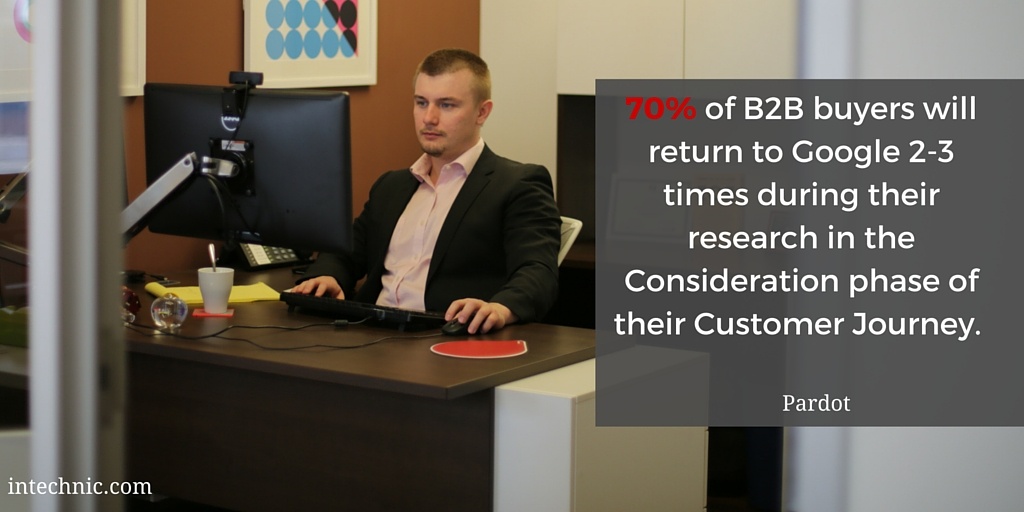 Many buyers loop through this stage several times. According to Pardot, 70% of B2B buyers will return to Google 2-3 times during their research, diving deeper and studying detailed information about each potential solution. Here are some common keywords that buyers use in the Consideration Stage when researching possible solutions to their problem or need:
Many buyers loop through this stage several times. According to Pardot, 70% of B2B buyers will return to Google 2-3 times during their research, diving deeper and studying detailed information about each potential solution. Here are some common keywords that buyers use in the Consideration Stage when researching possible solutions to their problem or need:
|
|
|
Consideration Stage: How to Collect Information
Just as with the Awareness Stage, you should collect information from your customer interviews. Don't make any assumptions based on how you or your colleagues think your customers behave during this stage. Remember, your team typically doesn't have access to prospects at this stage so you should go straight to the source (your customers) and find out how they actually went through this process. Focus on finding out how your customers go about researching solutions, which criteria they develop for evaluating solutions and how they go about developing that criteria (in other words: what's important to them?). At this stage, it is important to know the difference between B2B and B2C Customer Journeys as they could differ quite a bit. Ask your customers the following:
- How did you go about looking for solutions?
- When doing research online, which keywords did you use?
- What did you find?
- Were there any solutions that stood out? Why?
- Were there any solutions that you eliminated right away? Why?
For more examples, please download our Customer Journey Map Template that contains B2B and B2C examples of the Consideration Stage. 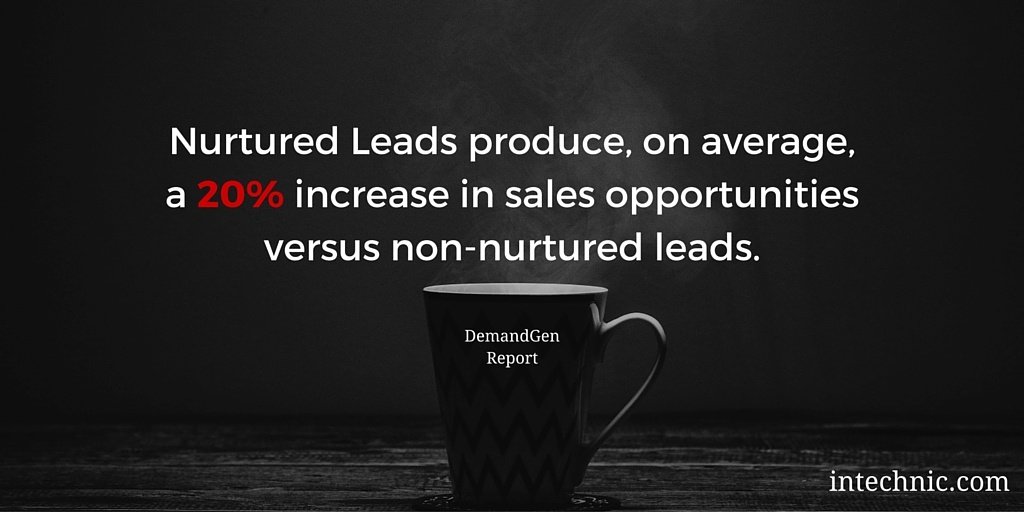
3. Decision Stage
Once buyers narrow their list down to a few solutions that might fit their needs and budget, they begin doing a more in-depth, side-by-side comparison. This is the stage where buyers start reaching out to sales representatives, asking questions, requesting demos and reaching out to others for recommendations. At this point, buyers are getting closer to making a purchase. They may already have a preference, but will want to keep all options open until the very end. They will start wrapping up loose ends to finalize their decision such as: looking at final costs, warranty, customer support and other things that only matter now that they are seriously interested. At this stage, most buyers are doing their remaining due-diligence to ensure that there is nothing they might have overlooked. 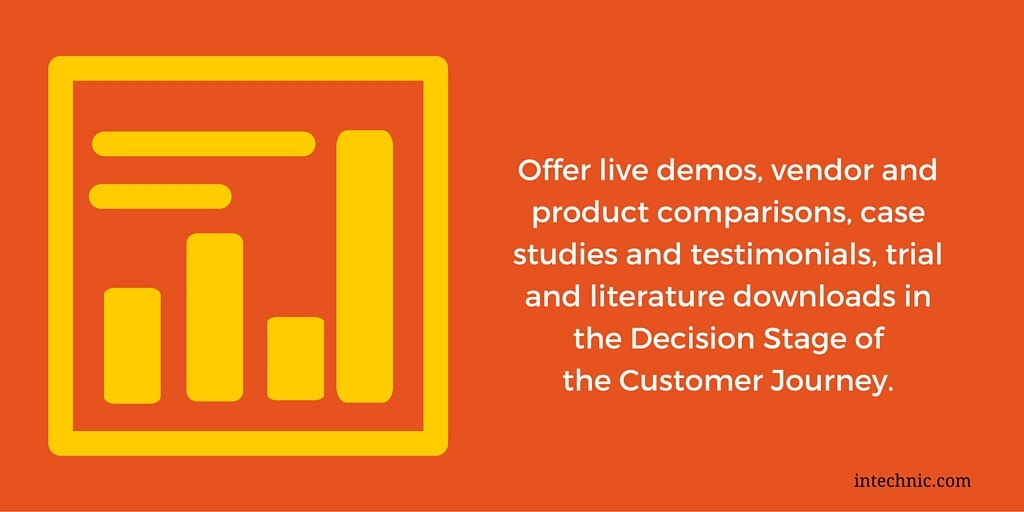 Here are some common keywords that buyers use in the Decision Stage to reach and finalize their decision:
Here are some common keywords that buyers use in the Decision Stage to reach and finalize their decision:
|
|
|
Note, this stage may involve multiple decision makers and influencers. Therefore, it is very important to know who is making the decision and who might be influencing that decision.
Decision Stage: How to Collect Information
It is important to recognize decision makers vs. influencers and their roles throughout the full Customer Journey, but this information is critical in the Decision Stage. Make sure you understand the difference and who ultimately makes the decision versus who influences the decision.  At this stage, buyers may start interacting with your sales team so interviewing your sales in addition to interviewing customers will be beneficial. When interviewing sales, make sure to limit your questions to the Decision Stage only. Don't let yourself be influenced by assumptions and opinions about what goes on in the Awareness and Considerations Stage (sales execs often simply don't/can’t know because buyers don't interact with them that early in the process). Remember, opinions must be eliminated from this process. Instead, focus on the information that sales people will know firsthand:
At this stage, buyers may start interacting with your sales team so interviewing your sales in addition to interviewing customers will be beneficial. When interviewing sales, make sure to limit your questions to the Decision Stage only. Don't let yourself be influenced by assumptions and opinions about what goes on in the Awareness and Considerations Stage (sales execs often simply don't/can’t know because buyers don't interact with them that early in the process). Remember, opinions must be eliminated from this process. Instead, focus on the information that sales people will know firsthand:
- How did the customer go about making the final decision?
- What additional information did they ask for?
- Did they share their decision making criteria? What were they?
- Who were the ultimate decision makers and who were the influencers?
When interviewing customers about their decision making progress, focus on the following questions:
- How did you go about making the final decision?
- Was there anyone who influenced your decision? If yes, who and how?
- Did you need to get someone else's approval to make the final decision? If yes, who and in what form?
- What criteria did you use to make the decision?
There are multiple possible B2B and B2C decision-making scenarios and examples available in our free download, Customer Journey Map Template. 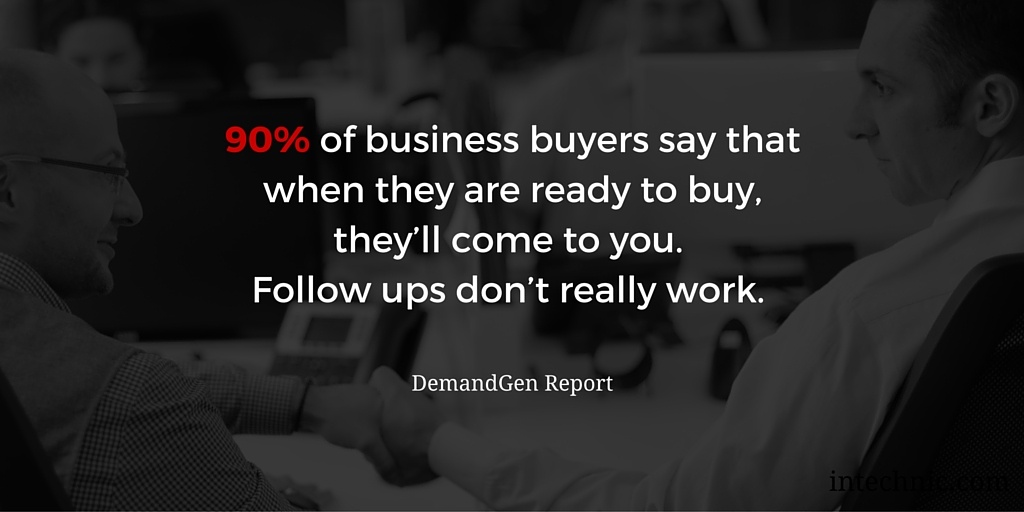
Extrapolating Information to Create a Customer Journey
Now that you have collected all this information, it is time to put it in the right format using the Customer Journey Map Template. When doing so, remember that you collected this information from multiple interviewees. Read over the answers from each interviewee and look for commonalities within each answer. See if you can recognize patterns in the chronological order, defined by the stages: Awareness, Consideration and Decision. When going through this exercise, keep in mind the following Do's and Don'ts:
Do's
- Do include all trends and patterns that help you trace the steps in the Customer Journey.
- Do create a separate journey for each Buyer Persona.
- Do create a separate journey for decision makers and influencers.
- Do beware of outliers. There could be exceptions that may not apply to the rest of the customers and might render your journey inaccurate.
- Do reference Personas (influencers or decision makers) by their name and role.
- Do use clear and unambiguous language. Avoid making any ambiguities.
Dont's
- Don’t make things up and don't include any unverified information. You want to include only factual information, actually collected from customers.
- Don’t include contradictory information. Analyze it to see if it is an exception or warrants creating a separate journey.
- Don’t use the specific answers of one person as the basis for a persona that represents many users.
- Don’t copy and paste! You should be interpreting the responses and inferring the ideas behind them.
- Don’t include unessential information (emotion-based answers, details that are irrelevant, etc.)
Validate Your Customer Journeys
The last thing you need to do once your Customer Journeys are created is test and validate them. To do so, give your Customer Journey to the people that interact with your clients the most (sales, account executives, customer support, etc.) Ask them questions such as:
- Are we missing any personas or persona types (decision makers or influencers)?
- Are we missing any common situations we haven’t accounted for?
- Is there anything that doesn’t seem right?
If potential mistakes are identified, you need to revisit your Customer Journeys and potentially plan some follow-up research or additional interviews. This is a discovery process. You may not get everything right the first time around, but you want your Customer Journeys to be an accurate representation of your customers’ buying behavior. 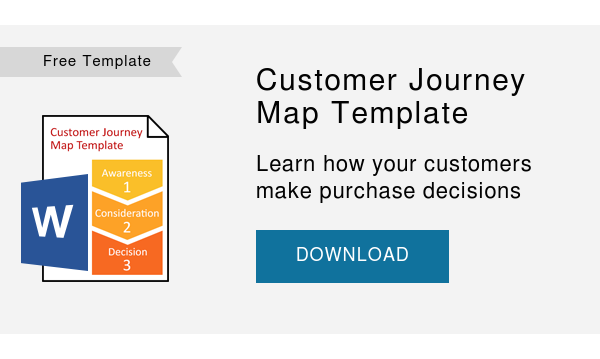
What’s Next?
Now that you have completed your Customer Journeys, you are ready to start looking at your competition, using online competitive analysis, and analyzing your website's strengths, weaknesses, opportunities and threats using SWOT analysis.
